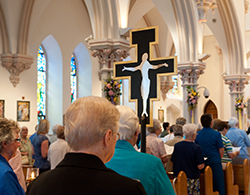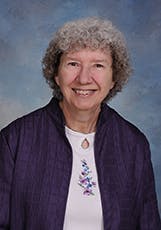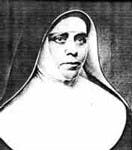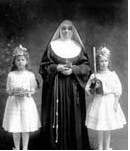Our Historical Timeline

An immigrant from Bavaria, Germany, Maria Anna Boll Bachmann (later known as Mother Francis) became a widow with three children and was pregnant with a fourth child. In 1851 her husband Anthony was mortally wounded at work as the result of bias against immigrants—a bias stirred up by the American Nativist Party in Philadelphia, Pennsylvania. To support herself and her young family, Anna operated a small shop and hostel for immigrant women while her sister, Barbara Boll, sewed for a tailor. Both Anna and a young guest in the hostel, Anna Dorn, a novice in the Franciscan Third Order Secular, concurred with Barbara’s wish to found a religious congregation. They sought the advice of Rev. John Hespelein, C.Ss.R., who wrote to Bishop John Neumann, then in Rome. Bishop Neumann had asked Pope Pius IX for permission to bring German Dominican Sisters into his diocese but was advised by the Pope, also a member of the Franciscan Third Order Secular, to establish a congregation of Franciscan sisters in his own diocese.
Seeing God’s hand in the letter and the advice, Bishop Neumann instructed the women, provided spiritual guidance, and accepted them into religious life. On Easter Monday, April 9, 1855, the bishop invested the three founding members in the habit of St. Francis, giving them new names:
- Anna Maria Boll Bachmann: Sister Mary Francis
- Barbara Boll: Sister Margaret
- Anna Dorn: Sister Bernardine.
Sister Mary Francis was elected leader of the new congregation, The Sisters of St. Francis of Philadelphia. Consistent with the practice of the times, as leader she was given the title “Mother.”
The sisters served the people of God wherever a need existed. Initially, in addition to hosting immigrant women, the sisters nursed the sick poor while supporting themselves and the sick by piecework sewing. At the time of the smallpox epidemic of 1858, they continued their care for the sick in patients’ homes or, when necessary, in their small convents. During that same year they responded to the need for teachers at St. Alphonsus Parish in Philadelphia. The following year Mother Francis agreed that the sisters would staff an orphanage in Philadelphia but because of various difficulties, she withdrew them less than a year later.
For the fledgling congregation, the year 1860 was memorable for its challenges and blessings. In January, Bishop Neumann died suddenly. In March, responding to the request of Franciscan Friars to teach German immigrant children in New York, three sisters left Philadelphia for Syracuse. Later in the year, Bishop Neumann’s successor, Bishop James Wood, separated the Syracuse mission from the Philadelphia foundation, creating a first daughter congregation with Sister Bernardine as its Superior General. In December 1860, Mother Francis opened the congregation’s first hospital, St. Mary’s in Philadelphia, because the sisters’ convents could not accommodate all their sick poor.
The sisters themselves had few resources apart from their courageous spirit and their trust in God’s providence. These proved sufficient because many people of Philadelphia supported their ministry in a variety of ways.
Many of those who were poor were admitted to the new hospital because, as Mother Francis wrote, “There is not a hospital in the entire city of Philadelphia where they accept patients with contagious diseases or poor people. We are convinced that God helps us and blesses our work; we have numerous proofs of that. We feed so many poor who come to the door.” She concluded that letter, “As long as God does not stop giving to us, we shall not stop giving to the poor.”
During the next step in the journey, Mother Francis sent sisters to Buffalo, New York, in response to the plea of the Redemptorist priests to serve the people of this rapidly growing city. While visiting the sisters in Buffalo, she was diagnosed with tuberculosis in late 1862. Exhausted from travel and ravaged by the disease, Mother Francis died on June 30, 1863 at the age of 39. When Buffalo was separated in the autumn of 1863 (with Sister Margaret as Superior General), the congregation in Philadelphia consisted of only nine professed sisters and five novices.
In 1863, Mother Agnes Bucher became the second Superior General. She is often called the second foundress because of the achievements during her long leadership of forty-three years. When she became superior in 1863, her thirteen sisters staffed one hospital and one school in one diocese. By the end of her tenure in 1906, there were nearly 800 sisters, serving in 88 missions, in 19 dioceses from the Atlantic to the Pacific Ocean. Ministries included 12 hospitals, nine Native American missions, six academies, seven orphanages, two homes for the aged, four African-American missions, and many elementary and secondary schools.
Throughout their history the Sisters of St. Francis of Philadelphia have been dedicated to serve–directly and indirectly–those who are poor. In the Mission Statement of 1986, they reaffirmed their commitment to minister to those who are poor, marginal, and oppressed. In 1996, they recommitted themselves to be “willing to take the necessary risks to be a healing, compassionate presence in our violent world, especially with women, children, and those who have no voice.”










